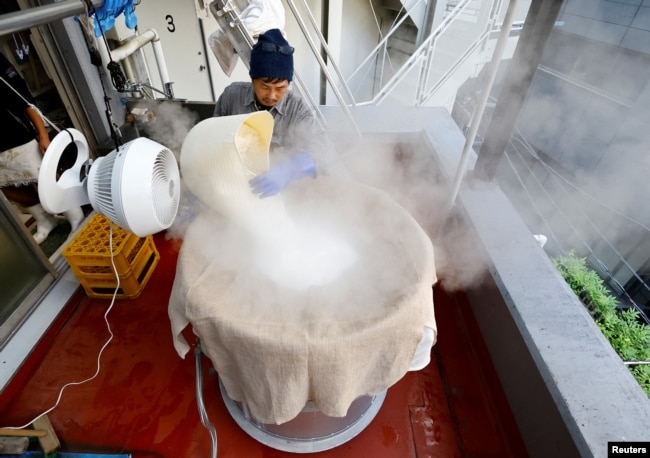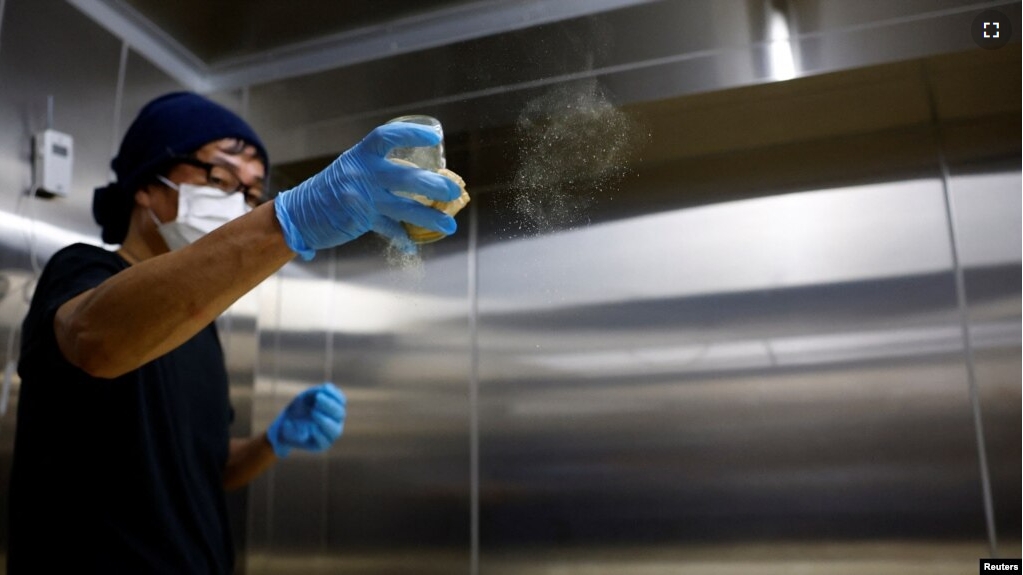A small space in Tokyo houses a container of fermenting sake.
The bacteria in the 670-litre container will take more than two weeks to turn the rice and water inside into Japan’s traditional alcoholic drink.
But the bacteria are not only alive, they are listening too, said brewer Yoshimi Terasawa.
He suggested the kind of music coming from a loudspeaker below the tank determines how the drink will taste.
“The micro-organisms inside are activated by the vibrations, and the taste changes,” said the 63-year-old chief brewer of Tokyo Port Brewing.
Music is among the unusual methods Terasawa is using at the only sake brewery in the heart of the capital city.
Fit into a narrow building, the small operation employs methods that promise to help the environment.

The brewery employs special machinery and processes that use less energy and labor than a traditional brewery in the countryside.
“Making sake on this kind of smaller scale makes it easier to keep the production environment constant,” Terasawa said. He has 45 years of experience in the industry.
The company produces about 30 kiloliters of sake each year. That is enough to fill almost 42,000 720-ml bottles.
But changing tastes and Japan’s aging population have reduced demand.
The government says the number of sake breweries has decreased two-thirds from its high point in the 1970s to just over 1,100 now.
More than half of sake breweries are not making a profit.
Other difficulties that sake breweries face include a shortage of workers as brewers retire, increased fuel costs and problems with the rice supply.
Terasawa said his small brewery offers an example of how to deal with those difficulties.
The process starts on the fourth floor, where he and an employee steam the rice for 70 minutes.
Then they let gravity move the rice through openings in the floors and ceilings to a mold-application room on the third floor. Fermentation, using tap water, takes place on the second level. Finally, the sake is put into bottles at ground level.
“In the future, small breweries like this will have a great deal of merit,” Terasawa added.
I’m John Russell.
Rocky Swift and Kyung Hoon Kim reported on this story for Reuters. John Russell adapted it for VOA Learning English.
________________________________________________
Words in This Story
ferment – v. to undergo fermentation (the anaerobic breakdown of an energy-rich compound (such as a carbohydrate to carbon dioxide and alcohol) by the action of microorganisms (such as bacteria or yeast)
sake – n. a Japanese alcoholic beverage of fermented rice
brewer – n. a person who creates (or brews) alcoholic drinks
vibration – n. a quivering or trembling motion
mold – n. a growth produced especially on damp or decaying organic matter
application – n. an act of administering or laying one thing on another
tap water –n. water that comes from ordinary pipes and is not treated in any special way
merit –n. value or worth
